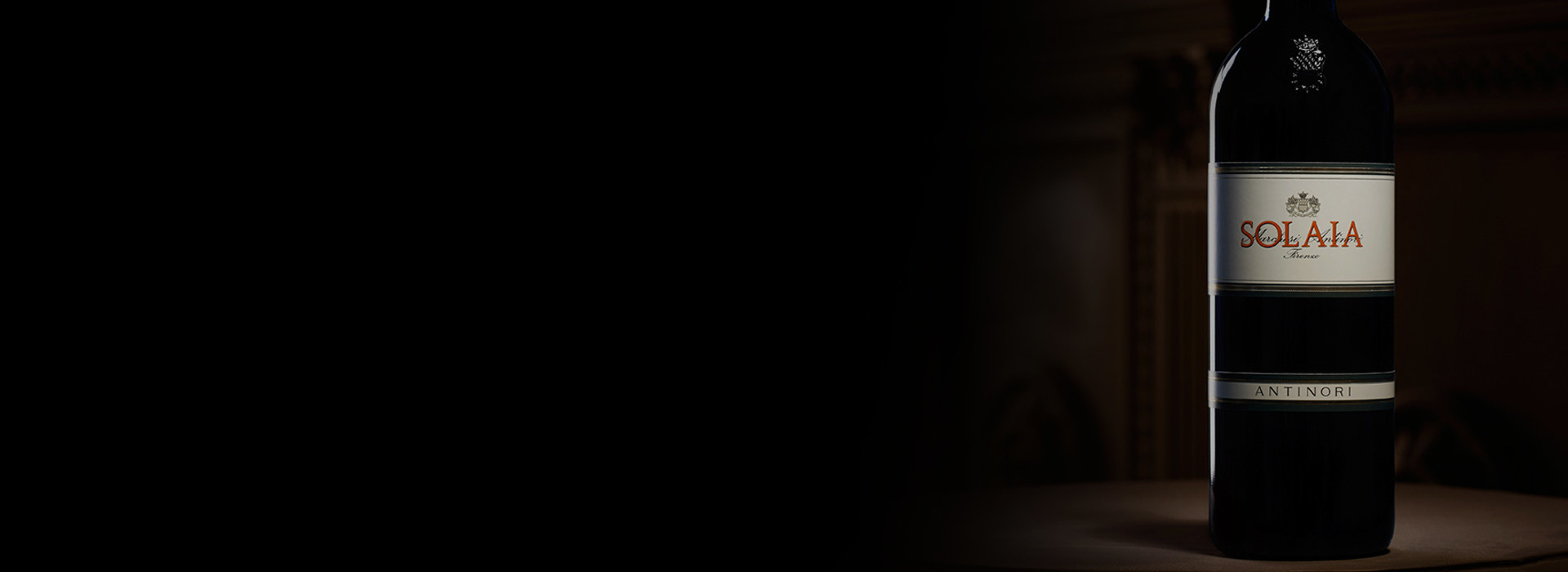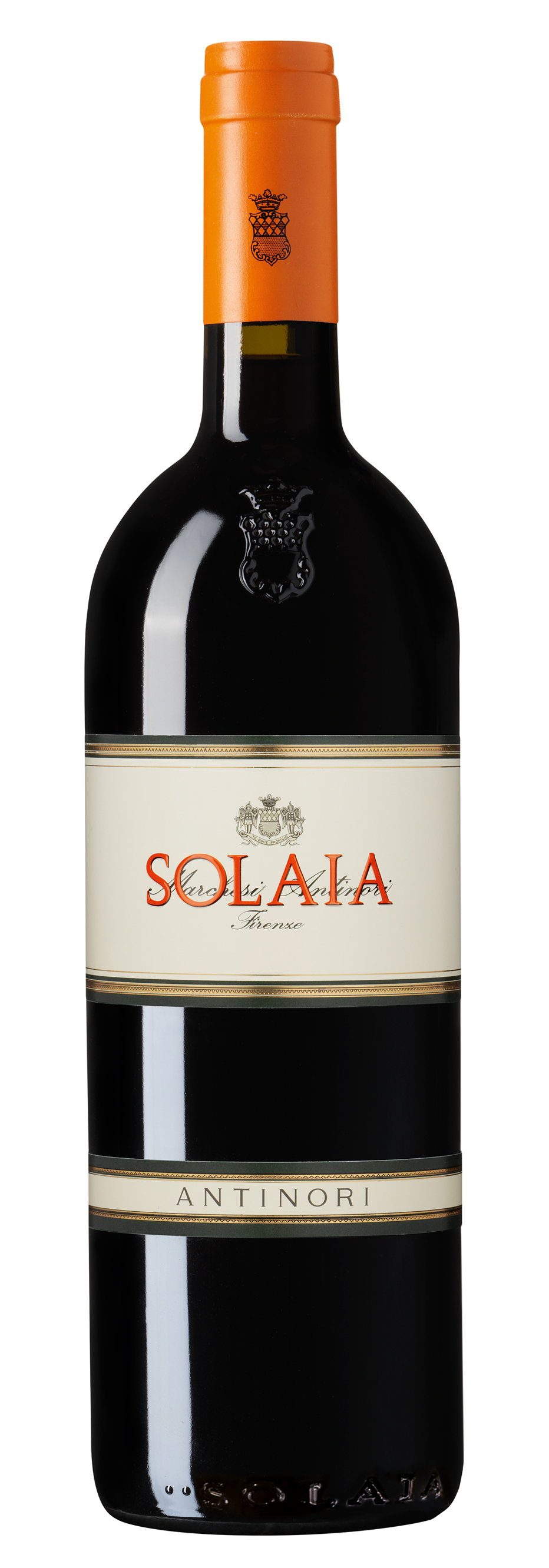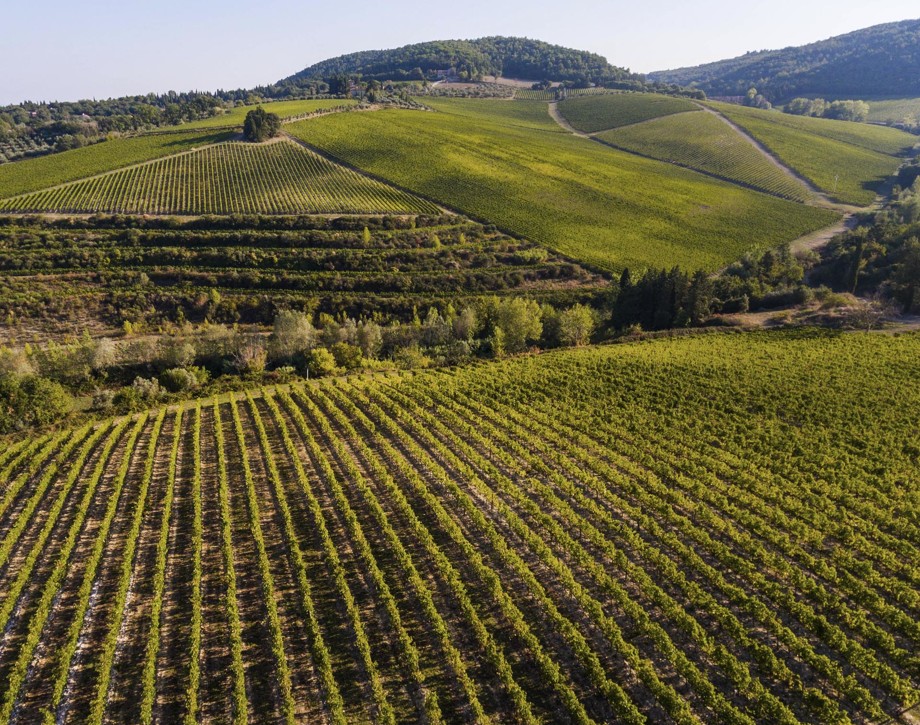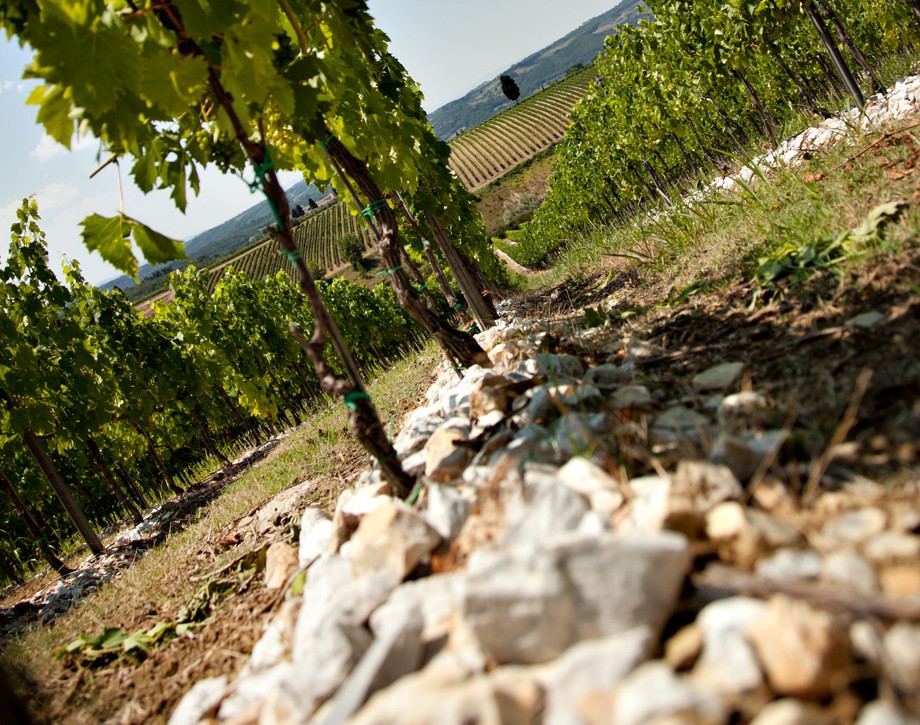Solaia

Climate
After a cold and snowy year’s end, 2011 began first with a rather dry climate and then with an extremely mild early spring. The warmth of the first days of April led to a bud burst ten days earlier than the normal seasonal average. May and June were months of favorable weather, with mild temperatures and little rainfall ,and a cool spell in early July brought plant growth and development back into line. After the first ten days of August, temperatures rose and continued at high levels until mid-September. Up until the last days of September the Sangiovese grapes, due to this heat, ripened slowly until climatic conditions changed during the last ten days of September: evening and nighttime temperatures fell and the swing from daytime warmth to evening and nighttime coolness helped complete the ripening process. Picking in fact began on September 27th and was completed during the first ten days of October. The Cabernet Franc had an optimal evolution in the vineyard – the grapes ripened regularly and were harvested from September 20th to September 26th. The picking of the Cabernet Sauvignon was concentrated in the first ten days of October, starting in the earliest-maturing vineyard parcels and terminating in the higher-lying plots.
Vinification
The must was fermented and slowly transformed into wine in conical fermenting tanks with a 6000 liter (1800 gallon) capacity; the wine was then run off its skins and went through a complete malolactic fermentation in small oak barrels to further enhance elegance and drinking pleasure. The aging process then began, and, in the case of the 2011 Solaia, lasted fourteen months and took place entirely in new French oak barrels. During this period the various lots, fermented separately on the basis of their variety and the specific conditions of their vineyard plots, slowly aged and were then assembled a few months before bottling.
Historical Data
Solaia is a 50 acre (20 hectare) vineyard with a southwestern exposure located at an altitude between 1150 and 1325 feet (350-400 meters) above sea level and with a stony soil of “alberese” (hard limestone) and “galestro” (flaky calcareous clay) rock. The vineyard is located at the Tignanello estate. The Antinori family produced this wine for the first time in the year 1978, and the initial blend was 80% Cabernet Sauvignon, and 20% Cabernet Franc, a formula repeated in 1979 as well. In the following years, 20% of Sangiovese was introduced and certain adjustments were also made in the rapport between Cabernet Sauvignon and Cabernet Franc until the current blend was settled upon. Solaia is produced only in exceptional vintage, and was not produced in 1980, 1981, 1983, 1984, and 1992.
Tasting Notes
An intense ruby red in color, at times impenetrably so, the 2011 Solaia shows intensely warm aromas which reflect the climate of the season while maintaining a delicate freshness as well. On the palate, the ripe red fruit and the spices, along with deep and floral notes, define the wine’s complex structure. The palate is succulent, rich, enveloping, and sweet thanks to the presence of dense, supple, and rounded tannins. The vibrant acidity contributes to the excellent expressiveness of the flavors and to a highly pleasurable, long, and persistent finish and aftertaste.
Awards
I Vini Di Veronelli 2015 Super Tre Stelle Italy Bibenda 2015 5 Grappoli Italy Annuario L. Maroni 93/100 Italy Wine Advocate 91/100 USA Antonio Galloni 96/100 USA James Suckling 96/100 USA Daniele Cernilli 97 /100 Italy Falstaff 97/100 Austria Wine Enthusiast 94/100 USA

The Wine
The sunniest part of the Tignanello's hillside is home to the Solaia vineyard. The very best grapes from the very best vineyard. All the rest is passion, the utmost care and research. These are the secrets of Solaia together with the finest Cabernet Sauvignon, Cabernet Franc and Sangiovese grapes from its namesake vineyard.

Climate
After a cold and snowy year’s end, 2011 began first with a rather dry climate and then with an extremely mild early spring. The warmth of the first days of April led to a bud burst ten days earlier than the normal seasonal average. May and June were months of favorable weather, with mild temperatures and little rainfall ,and a cool spell in early July brought plant growth and development back into line. After the first ten days of August, temperatures rose and continued at high levels until mid-September. Up until the last days of September the Sangiovese grapes, due to this heat, ripened slowly until climatic conditions changed during the last ten days of September: evening and nighttime temperatures fell and the swing from daytime warmth to evening and nighttime coolness helped complete the ripening process. Picking in fact began on September 27th and was completed during the first ten days of October. The Cabernet Franc had an optimal evolution in the vineyard – the grapes ripened regularly and were harvested from September 20th to September 26th. The picking of the Cabernet Sauvignon was concentrated in the first ten days of October, starting in the earliest-maturing vineyard parcels and terminating in the higher-lying plots.
Vinification
The must was fermented and slowly transformed into wine in conical fermenting tanks with a 6000 liter (1800 gallon) capacity; the wine was then run off its skins and went through a complete malolactic fermentation in small oak barrels to further enhance elegance and drinking pleasure. The aging process then began, and, in the case of the 2011 Solaia, lasted fourteen months and took place entirely in new French oak barrels. During this period the various lots, fermented separately on the basis of their variety and the specific conditions of their vineyard plots, slowly aged and were then assembled a few months before bottling.
Historical Data
Solaia is a 50 acre (20 hectare) vineyard with a southwestern exposure located at an altitude between 1150 and 1325 feet (350-400 meters) above sea level and with a stony soil of “alberese” (hard limestone) and “galestro” (flaky calcareous clay) rock. The vineyard is located at the Tignanello estate. The Antinori family produced this wine for the first time in the year 1978, and the initial blend was 80% Cabernet Sauvignon, and 20% Cabernet Franc, a formula repeated in 1979 as well. In the following years, 20% of Sangiovese was introduced and certain adjustments were also made in the rapport between Cabernet Sauvignon and Cabernet Franc until the current blend was settled upon. Solaia is produced only in exceptional vintage, and was not produced in 1980, 1981, 1983, 1984, and 1992.
Tasting Notes
An intense ruby red in color, at times impenetrably so, the 2011 Solaia shows intensely warm aromas which reflect the climate of the season while maintaining a delicate freshness as well. On the palate, the ripe red fruit and the spices, along with deep and floral notes, define the wine’s complex structure. The palate is succulent, rich, enveloping, and sweet thanks to the presence of dense, supple, and rounded tannins. The vibrant acidity contributes to the excellent expressiveness of the flavors and to a highly pleasurable, long, and persistent finish and aftertaste.
Awards
I Vini Di Veronelli 2015 Super Tre Stelle Italy Bibenda 2015 5 Grappoli Italy Annuario L. Maroni 93/100 Italy Wine Advocate 91/100 USA Antonio Galloni 96/100 USA James Suckling 96/100 USA Daniele Cernilli 97 /100 Italy Falstaff 97/100 Austria Wine Enthusiast 94/100 USA

Tenuta Tignanello
The Tenuta Tignanello estate is in the heart of Chianti Classico, in the gently rolling hillsides between the Greve and Pesa river valleys. It extends over an area of 319 hectares (788 acres), of which 130 (321 acres) are dedicated to vines. Two of the estate’s prized vineyards are on the same hillside, Tignanello and Solaia, on soils that originated from marine marlstone from the Pliocene period rich in limestone and schist. The vines enjoy hot temperatures during the day and cooler evenings throughout the growing season. The estate’s two signature wines, Solaia and Tignanello, are produced from these vineyards and have been defined by the international press as “among the most influential wines in the history of Italian viticulture”. According to Marchesi Antinori, Solaia and Tignanello are an ongoing challenge and a never-ending passion. The Tignanello estate has vineyards of indigenous Sangiovese grapes as well as some other untraditional varieties such as Cabernet Franc.

Soil
Soils originating in the Pliocene period, rich in marine fossils with veins of clay. Rich presence of calcareous rocks and marl.
















